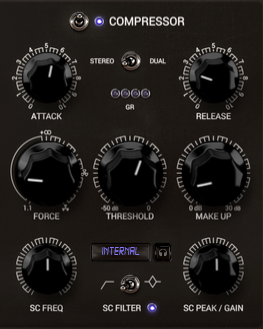Crafting Impactful Moments in Electronic Music: A Guide to Using Impacts
In the world of electronic music production, transitions are not just about moving from one part of your track to another; they're about doing so with intention, drama, and impact. One of the most effective tools at a producer's disposal for achieving this is the strategic use of impact sounds. These sonic elements act as the exclamation points of your track, underlining key moments and transitions with authority and weight. This article delves into the art of crafting and incorporating impactful sounds, ensuring your transitions leave listeners on the edge of their seats.
The Role of Impacts in Music Production
Impacts are akin to punctuation in the language of music—they denote a pause, signify emphasis, and prepare the listener for what's next. In electronic music, and especially genres like Tech House, impacts mark significant moments such as drops, transitions, and the culmination of build-ups. They add a sense of drama and finality that enhances the overall listening experience.
Crafting an Impact: Step-by-Step Guide
Creating a memorable impact sound involves layering, processing, and a touch of creativity. Here's how you can create an impact from scratch:
Step 1: Layer Sounds for Depth
Low-Frequency Booms: Start with a deep, low-frequency boom to provide the weight and power behind your impact. This could be a tuned kick drum or a synthesized sub-bass note.
White Noise Crashes: Add a layer of white noise crash to cover the higher frequencies, giving your impact a sense of brightness and spread. This contrasts nicely with the low-frequency boom and adds spatial dimension.
Short Percussive Hits: Incorporate one or more short, sharp percussive elements, such as claps, snares, or found sounds, to add attack and immediacy to the impact.
Step 2: Process for Cohesion and Power
Compression: Use a compressor to glue the different layers together. A gentle ratio and a slow attack time will preserve the transient of the percussive hits while bringing up the tail of the boom and crash for a unified sound.
Equalization (EQ): Apply EQ to mold the frequency content of your impact. Emphasize the low end to ensure it carries the necessary weight and cut any unnecessary high frequencies to maintain clarity and prevent harshness.
Step 3: Fine-Tuning and Integration
Volume and Placement: Carefully adjust the volume of your impact so it sits well in the mix without overwhelming other elements. Consider the timing of the impact to maximize its effect—right at the end of a build-up or leading into a drop.
Spatial Effects: Adding a touch of reverb or delay can place the impact in the same acoustic space as the rest of your track, aiding in a seamless blend. Use these effects sparingly to maintain the impact's power.
Conclusion
Impacts are essential tools in the electronic music producer's arsenal, capable of transforming transitions into moments that capture and release tension with dramatic flair. By layering sounds, applying thoughtful processing, and integrating these elements with care, you can elevate your tracks, ensuring that each transition packs the emotional punch and energy your music deserves.
Remember, the key to successful impacts lies not just in the sounds you choose but in how you blend and sculpt them to fit the narrative of your track. Experimentation is your ally—don't be afraid to try different combinations and processing techniques to find the perfect impact sound that complements your musical vision.


















